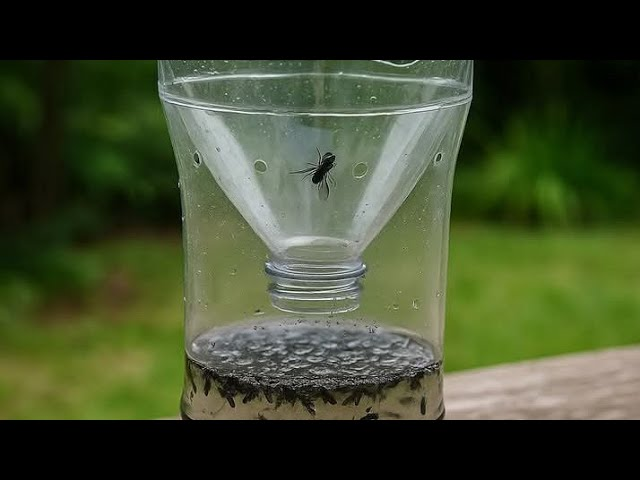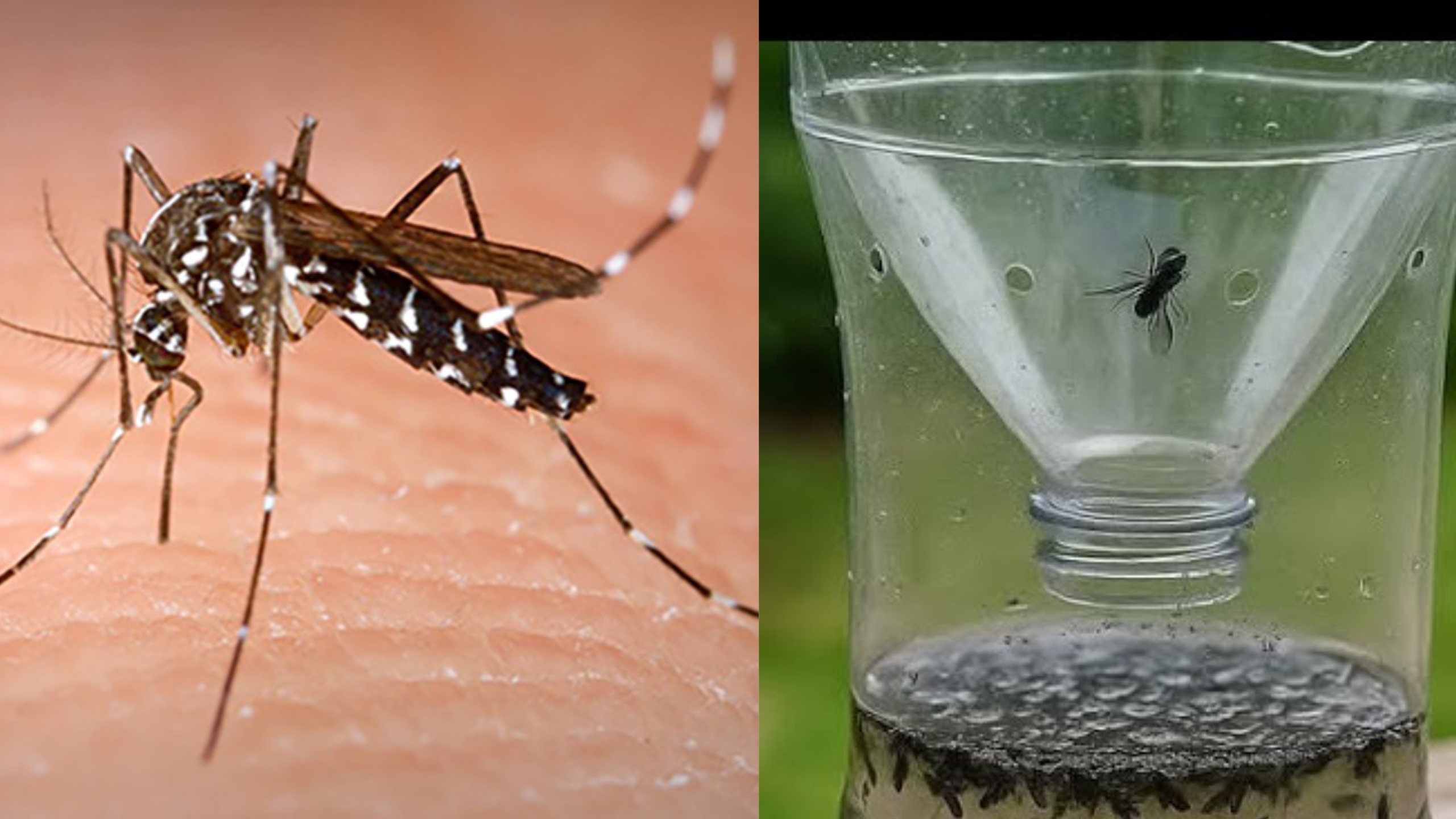May 21, 2025 — By Abdouzer
If you’ve ever faced a sudden invasion of flies in your home, you know just how irritating they can be. These tiny pests tend to appear more frequently during warmer months or seasons of high proliferation. Commercial fly traps are often pricey, ineffective, or contain chemicals that might not be safe for children or pets. That’s why many people prefer natural, affordable, and easy-to-make solutions.
Today, I want to share with you a homemade fly trap that I created back in 2015. It’s a simple DIY project that has stood the test of time — still effective, still inexpensive, and made from ingredients you probably already have in your kitchen.
Why Opt for a DIY Fly Trap?
Flies are attracted to certain scents — residues of food leftovers, rotting fruits, garbage, and sweet or fermenting liquids. When they find these smells, they swarm and quickly turn your home into their playground. An invasion can be not only annoying but also unhygienic, especially in kitchens and dining areas.
Store-bought traps might seem convenient, but they have their downsides. Many are costly, some emit strong chemical odors, and others pose safety risks, especially around children and pets. A homemade trap, on the other hand, is cost-effective, safe, eco-friendly, and customizable.
The Power of Simple Ingredients
One of the highlights of this DIY fly trap is its simplicity. You only need ingredients that are almost certainly lying around your house:
- ½ cup of sugar
- ¼ cup of vinegar (apple cider vinegar or white vinegar both work fine)
- ½ cup of hot water
- 1 teaspoon of salt
These ingredients combine to create a lure that attracts flies irresistibly. The salt not only helps lure but also enhances the trap’s effectiveness by speeding up the death process of the insects. Plus, the mixture is safe for humans and pets.
Step-by-Step: How to Make Your Fly Trap

1. Prepare the Bottle
Start with a clean, empty plastic bottle. Cut it in half horizontally — this creates two parts: the top ‘funneled’ section and the bottom ‘base.’ Keep the cap to attach later.
2. Mix the Ingredients
In a bowl, pour the hot water. Add the sugar, vinegar, and salt. Mix thoroughly until the sugar and salt are fully dissolved. This aromatic mixture mimics rotting food or fermenting fruit, drawing flies in.
3. Assemble the Trap
Pour the liquid mixture into the bottom part of the bottle. Then, invert the top part (the funnel) and place it upside down into the base, creating a cone-shaped entry. Ensure there are no gaps, so flies can’t escape once inside.
4. Placement is Key
Position your homemade fly trap near areas where flies are most active — over garbage cans, near fruit bowls, or on kitchen counters. For best results, use multiple traps if your infestation is severe.
How Does This DIY Trap Work?
Flies are naturally attracted to the sweet and fermenting smell produced by the vinegar and sugar. When they enter through the funnel, they find themselves trapped — unable to fly back out due to the constricted opening. The salt in the mixture enhances the effect by dehydrating the insects, killing them more quickly.
Once filled with flies, simply dispose of the trap, rinse, and refill if necessary. Regular replacement keeps the scent strong and effective.
Tips to Maximize Effectiveness
- Replace the mixture every 3-4 days. As the scent diminishes over time, fresh ingredients maintain the trap’s power.
- Place multiple traps around your home for greater coverage during intense infestations.
- Keep your home clean and dry. Remove sources of attraction by cleaning up spills, sealing garbage, and sorting fruit.
Why Should You Try This?
This homemade fly trap offers numerous advantages:
- Low cost: The ingredients are budget-friendly and usually available at home.
- Safe and non-toxic: No harmful chemicals that could endanger children or pets.
- Eco-friendly: It reduces reliance on chemical pesticides and synthetic traps.
- Effective: Many users report noticeable results within a few days, especially when used alongside good hygiene practices.
If you’ve tried other methods without success, this simple fix might be the solution you’re looking for. It’s a practical first step before resorting to sprays or professional extermination.
Wrapping Up
Dealing with flies doesn’t have to be complicated or expensive. A homemade trap like this combines ease, safety, and cost-effectiveness. Plus, creating it is also a small act of sustainability — reusing bottles and avoiding unnecessary chemicals.
Have you tried this or other natural remedies? Share your experiences or ask questions below! We’re here to help you keep your home fly-free and comfortable.
Related Tips
- How to eliminate mosquitoes, flies, and cockroaches in just 1 hour with home solutions
- Transform your home with a spider control method in just 24 hours
Stay tuned for more eco-friendly tips for a healthier, pest-free home!
Note: Always ensure proper hygiene and cleanliness to prevent ongoing pest issues. A combination of sanitation and natural traps offers the best results.


cost amoxicillin – comba moxi oral amoxil
diflucan brand – on this site buy diflucan for sale
cenforce where to buy – cenforce 50mg usa buy cenforce online
cialis for sale over the counter – https://ciltadgn.com/ cialis 20 mg how long does it take to work
is tadalafil and cialis the same thing? – tadalafil with latairis cialis prostate
viagra buy uk – https://strongvpls.com/ buy cialis vs viagra
This website exceedingly has all of the bumf and facts I needed about this subject and didn’t identify who to ask. prednisone ulcerative colitis
This is a theme which is near to my fundamentals… Many thanks! Unerringly where can I notice the phone details for questions? click
Thanks on sharing. It’s acme quality. https://ursxdol.com/prednisone-5mg-tablets/
This website exceedingly has all of the information and facts I needed there this thesis and didn’t positive who to ask. https://prohnrg.com/product/atenolol-50-mg-online/
Thanks for putting this up. It’s understandably done. https://aranitidine.com/fr/viagra-100mg-prix/
The vividness in this ruined is exceptional. https://ondactone.com/product/domperidone/
This is the kind of topic I take advantage of reading.
https://doxycyclinege.com/pro/levofloxacin/
This is the stripe of glad I get high on reading. http://www.fujiapuerbbs.com/home.php?mod=space&uid=3618560
buy generic forxiga over the counter – on this site buy dapagliflozin 10 mg generic
how to buy orlistat – https://asacostat.com/# orlistat pills
More posts like this would make the blogosphere more useful. http://www.dbgjjs.com/home.php?mod=space&uid=533020
You can shelter yourself and your family by way of being cautious when buying prescription online. Some pharmaceutics websites operate legally and sell convenience, solitariness, sell for savings and safeguards as a replacement for purchasing medicines. buy in TerbinaPharmacy https://terbinafines.com/product/inderal.html inderal
This is the kind of serenity I take advantage of reading. pharmacie qui vend du cialis professional sans ordonnance
This is a topic which is forthcoming to my callousness… Diverse thanks! Exactly where can I notice the phone details for questions?
407942 208103I was seeking at some of your articles on this site and I believe this internet internet site is genuinely instructive! Keep on posting . 989595
https://t.me/s/be_1win/104